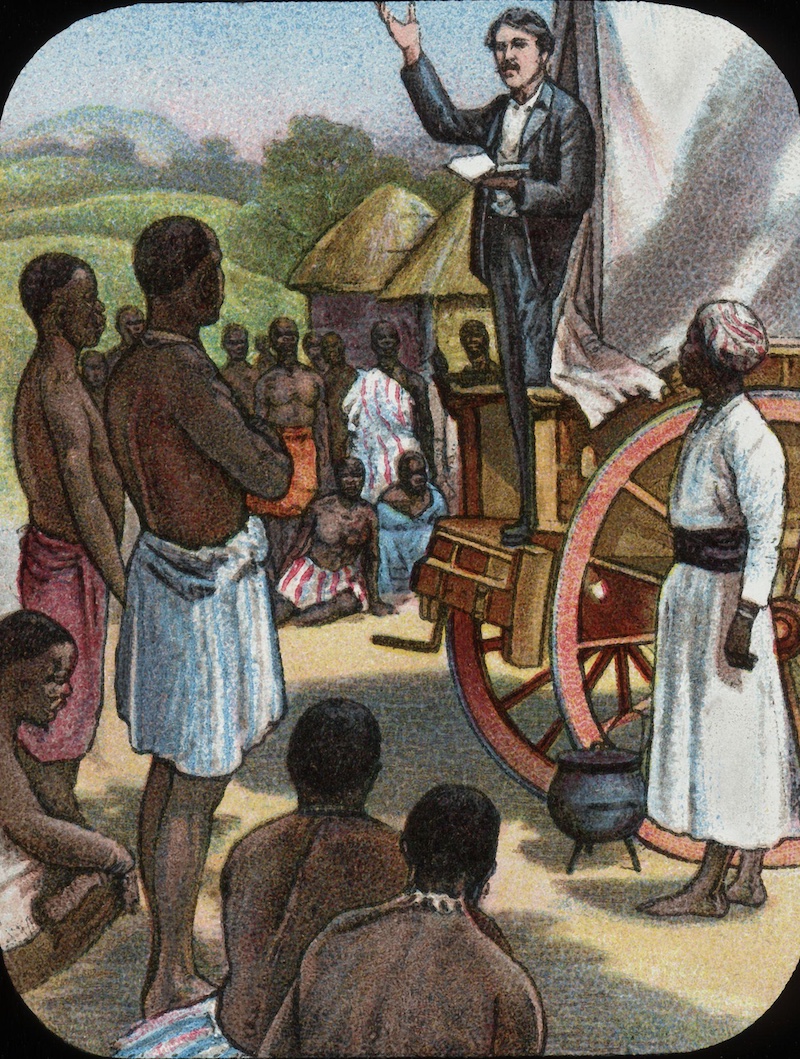David Livingstone (1813–1872)
Episode #8 of the course “Europe’s greatest explorers”
David Livingstone was a British explorer who charted more of the African interior than any of his European contemporaries. He ventured on three expeditions to Africa, surveying and documenting the geography and local customs across the Kalahari Desert and throughout modern-day Zimbabwe, The Congo, Mozambique, and other African kingdoms. On his third expedition, he was searching for the mouth of the Nile River when he disappeared from contact with England for over four years.
Born into a poor Scottish family, Livingstone was committed to his education. He entered the Missionary Society in London to study medicine, where he received a chance to go to Cape Town to practice as a missionary doctor. In 1845, he met and married fellow missionary Mary Moffat, with whom he would have four children.
Livingstone was steadfast in his mission to bring Christianity to all of Africa, and he became increasingly appalled by the active Arab slave trade. On Livingstone’s subsequent four-year mission to chart the unknown path along the shores of the 2,200-mile Zambezi River, he became the first European to cross the width of southern Africa from the Atlantic to the Indian Ocean.
Livingstone returned to England and published Missionary Travels and Researches in South Africa in 1857. He financed his return with a commission from the British government to chart the territories across the African continent. In addition, Livingstone preached Christianity, promoted European medicine and hygiene practices, and was outspoken in his abolitionist ideology. Slave traders from Persia, Arabia, and Oman were plundering African villages along the eastern coast, driving deeper into the continent’s interior. They were even recruiting Africans into warfare, placing bounties on the heads of captured enemies. Livingstone was appalled but powerless to do anything.
The British government ordered Livingstone home in 1864 and refused to finance any more expeditions. Thanks to his speaking engagements and publications about the thriving slave trade, Livingstone was able to secure additional private financing for a third expedition. In addition to reporting on the trade, he was also supposed to be searching for the source of the Nile River. Explorers had been seeking the river’s source for nearly 2,000 years and had all but given it up as a lost cause.
As Livingstone probed deeper into the continent, he increasingly lost contact with England. Unable to obtain new resources or send out letters, he became exceedingly impoverished. The Arabs prohibited his correspondence, and disease, famine, theft, loss, and difficult terrain all contributed to his dwindling resources. For four years, Europe received no word of Livingstone and was unsure if he was even still alive.
When an American journalist took up the charge to re-establish contact with Livingstone, he was located in modern-day Republic of Congo in 1871. He was in poor health, dire poverty, and strained consciousness, but he held more information on the customs and geography of Africa than any other European at the time. Livingstone chose to stay in Africa and died of dysentery and malaria in modern-day Zambia in the village of Chief Chitambo. His remains were preserved and sent back to England, where they are buried at 15 Westminster Abbey.
Recommended book
“The White Nile” by Alan Moorehead
Share with friends



